| Article ID | Journal | Published Year | Pages | File Type |
|---|---|---|---|---|
| 2011319 | Pharmacological Reports | 2010 | 8 Pages |
Aspirin exerts its analgesic, antipyretic and anti-inflammatory actions by inhibiting the enzyme cyclooxygenase and thus preventing the formation and release of prostaglandins. The elucidation by John Vane of the mechanism of action of aspirin in 1971 was followed twenty years later by the discovery of a second cyclooxygenase enzyme, COX-2 and the rapid development of selective inhibitors of this enzyme. The COX-2 inhibitors are potent anti-inflammatory drugs without the damaging side effects on the stomach mucosa of the non-selective aspirin-like inhibitors. More recently, two enzymes have been identified inhibition of which may explain the mechanism of action of paracetamol. These are a putative cyclooxygenase-3 which is a variant of cyclooxygenase-1 and derives from the same gene, and a COX-2 variant, induced with diclofenac, which may be involved in the resolution of inflammation.
